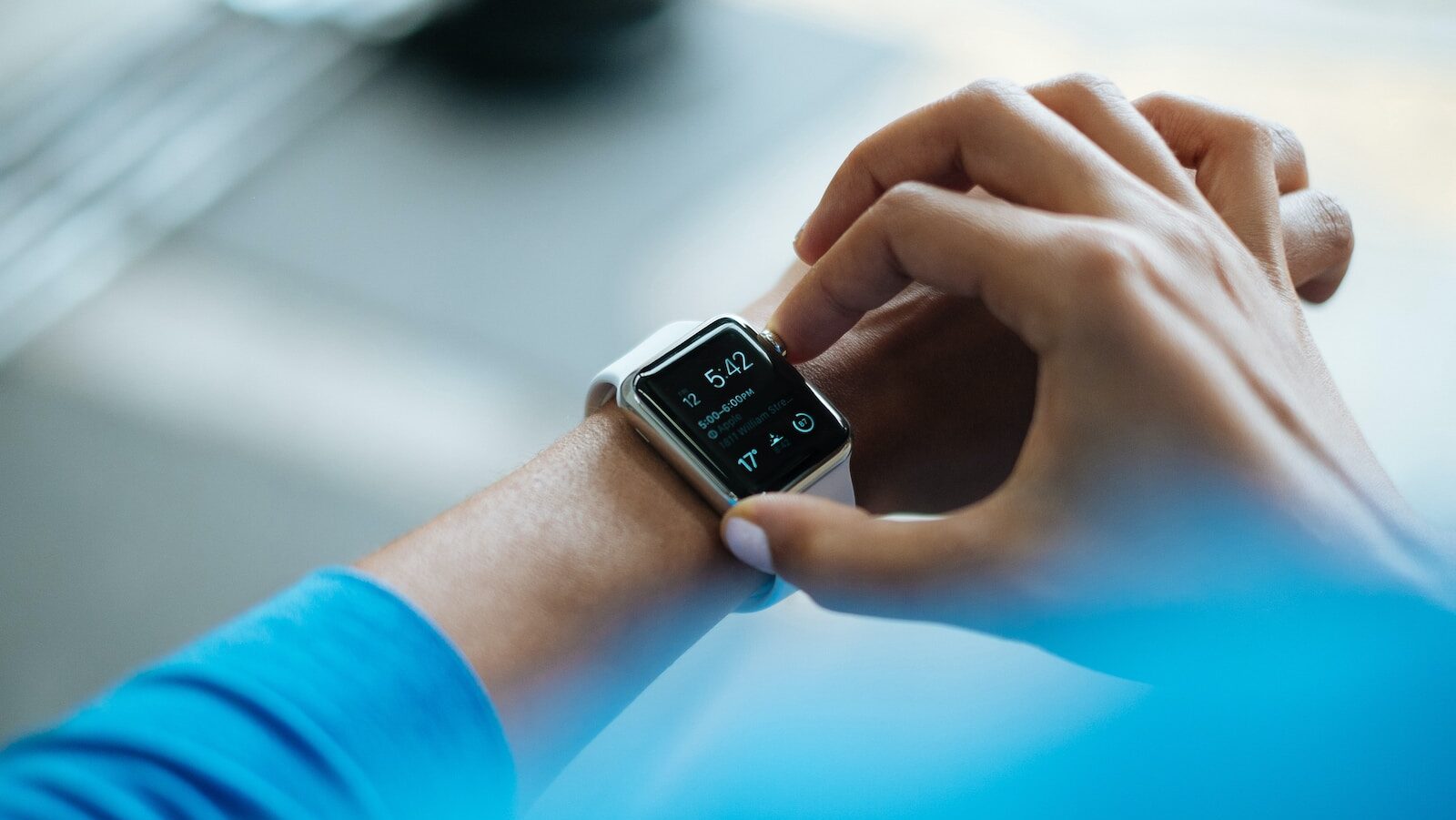Well-being offers a sustainable alternative to health optimization
The wellness industry is rapidly expanding with products and services tailored to “optimize health.” As an alternative to health optimization, coaches can support a holistic view of well-being that equips clients with the skills and resources to imagine a future of well-being for all.
Challenge:
Marketing around health optimization promotes the achievement of perfect physical health and appearance over holistic well-being
Opportunity:
Coaching empowers people to make positive changes in their lives and connects them to the resources that sustain those changes
Impact:
Coaches can shape the future of well-being to support awareness, empowerment, and long-term behavior change over productization
Wisdom Weavers
Health optimization technology is disrupting how individuals relate to health and their bodies
Increased awareness around health and wellness is set to transform the future of how individuals work, buy products, and think about their bodies. Beyond preventing illness and managing daily health, new technologies champion “health optimization,” where users can achieve enhanced energy and focus while improving lifespan and appearance. At one end of the market, wearable health trackers, wellness apps, supplements, and services offer ways to monitor, control, and improve health and wellness at home. At the same time, more exclusive therapies and medical treatments help athletes and the wealthy to “age backward,” maintaining peak physical health into later years.
Coaches are already interacting with wellness trends aimed at improving health to prevent harm like burnout, anxiety, or illness. Organizational wellness programs, health and wellness coaching, and executive coaching commitments are expanding to support clients’ physical and mental health goals. While health technology can promote greater awareness around lifestyle factors and physical health outcomes, the products, services, and biohacks surrounding optimized health can position health as an achievement or something to be purchased. Optimized health can also lead to thinking of the body as a machine, where increased energy leads to greater productivity, ignoring the body’s need for rest. In a world that gravitates toward health hacks and quick fixes, coaches can take an active stand to shift the narrative from optimized health to sustainable client well-being. As a holistic development approach, well-being honors the full range of our physical, emotional, social, and existential needs and supports well-being for all.
Limits and challenges to the optimized health trend
The wellness industry is expected to grow by 52%, between 2023 and 2027, with an estimated future value of USD 8.5 trillion. Health tech leader and Wisdom Weaver Marcus Ranney connects the optimization trend to growth in the wellness industry, “The first big shift that happened through the cost of the pandemic was the realization of the competitive advantage that health plays in our lives, whether it’s us as individuals, organizations, or systems.” In line with this shift, Marcus notes that investment in these products also increases affordability and access. As a result, “Health is becoming more proactive, personalized, preventative, and participatory. With Gen-Z, we are reaching a generation that allows themselves to think about optimization to another degree.”
Health optimization becomes a perfect branding opportunity for younger tech-savvy generations interested in disrupting, innovating, and improving existing systems. At face value, health optimization can help people increase health awareness and access to information, giving people greater control over their health. For example, wearable health trackers can give people more insight into how behaviors like sleep and healthy eating contribute to greater energy or improved performance at the gym. However, these same products can also lead to anxiety and perfectionism in certain users. Digital wellness expert and Wisdom Weaver Anastasia Dedyukhina adds, “Excessive reliance on digital technology may interfere with natural self-regulation.” For example, when people rely on fitness apps to know when to drink water or rest, they may not be as attentive to signals from their own bodies. “The idea that we must replace our ill human abilities to maximize productivity is faulty.” Instead of viewing technology as an answer to poor well-being, Anastasia believes that coaches can help clients develop their sense of interoception or internal bodily awareness. She considers “technology best used as a reminder tool for people who already know their bodies.”
Health and wellness products also struggle to help people understand the full scope of their well-being. Pointing to the vast array of health trackers and apps, Marcus shares, “The biggest challenge we face today is data interoperability, where users can access and analyze their health information across devices and platforms.” Building off research in longevity and the world’s healthiest communities, Marcus and his team at Human Edge are working to combine data from blood samples, movement trackers, and diet logs to help clients understand the full breadth of their well-being. However, other essential aspects of well-being, like social connection, meaning, and purpose, are more challenging to track. For coaches, Marcus believes this data can provide a starting point to help clients understand their overall well-being, reflect on areas not covered through trackers, and support client motivation to improve overall well-being.
Coaches can promote the critical awareness and skills needed for future well-being
Like health optimization, “well-being” shifts focus from preventing illness to proactively supporting the building blocks of a good life. Positive psychologist Martin Seligman proposed the Theory of Well-being after studying the personal strengths and conditions that promote thriving, including positive emotion, engagement, relationships, meaning, and accomplishment. More recent well-being applications combine the mental, emotional, and existential domains of Seligman’s theory with physical and social determinants of health, such as access to healthy foods, movement, social connection, and security.
Coaches can assist their clients in moving from a mindset that focuses solely on optimizing physical and mental health to one that understands both the internal and external factors that support well-being. This means helping clients develop the skills to identify unmet needs, adopt healthy behaviors, and seek support. With these skills, coaches can create a ripple effect in the future of human flourishing, promoting well-being not only for clients but for those around them.
Future Skills: Bodily awareness and empathy
An immediate need to support client well-being is enhancing client awareness of the body. This includes interoception, or the internal awareness of the body and mind. Anastasia projects that interoception skills will only become more relevant in the future as people rely on technology to measure their behavior and goals. She explains that when people rely too heavily on devices to track their health, they may stop listening to signals from their bodies. “For coaches, the work is very simple. They are helping the person go back to who they are and removing the unnecessary layers. Nature has done amazing work training people how to stay well. Everything is inside us, evolved throughout centuries — all the mechanisms are there.”
Sometimes, needs are pushed down or ignored because they are not valued in a specific environment. As a thought leader in empathy and organizational wellness, Wisdom Weaver Mimi Nicklin explains that environments with high stress, a lack of psychological safety, and poor communication can hinder individuals from understanding their own needs and the needs of others. When coaches work to uncover unmet needs, they can help clients explore why different needs have been ignored and learn to honor those needs in new ways.
Global trends in stress and negative emotions have been on the rise for nearly 15 years, with 4 in 10 adults reporting regular stress. With this trend in mind, Mimi shares how empathy will be a critical skill of the future. “When we think of empathy, inward self-empathy is when you understand your needs as a person. That could be a need for solace, quiet, escapism, and better health, which leads to self-care. Building off this foundation, Mimi also highlights the value of receiving care. As a compliment to self-care, Mimi underscores the importance of “outward self-empathy,” or “the ability to understand what you need and then communicate outwardly to others in order to get that.”
The skills that support individual well-being can support a future of human flourishing
Whereas health optimization focuses on personal improvement, well-being aims at creating environments that support individual thriving and collective well-being. When coaches build client awareness and skills to support well-being, they can also draw client awareness outward. Global Health Professional and Wisdom Weaver Sam Brakarsh urges coaches to see self-care as a skill that calls for greater accountability to those around them; “Self-care is incredibly important. That means having tools to ground oneself while at the same time being aware of when the language of self-care starts to silence and pacify us, so we do not feel anger against injustices. The most successful marketing campaign ever was the phrase, ‘Treat yourself.’ So, we can ask what self-care means and when is it playing into harmful and extractive systems?” Sam believes coaches can play an influential role in “maintaining conversations around well-being that are not pacifying but rather interrogate the ego and explore discomfort.” This includes exploring the dynamic between personal well-being and how we interact with peers and those we have power over. As a reflective practice, this same questioning can help coaches understand how their own well-being impacts client engagements and bring attention to behaviors that are pacifying needs instead of addressing them.
“While I believe in the power of self-empathy and self-care, we have to become more aware of our interconnectedness. We can only be well if we are all well. As humanity, we have to do this together if we’re going to thrive and flourish in the future.”

By focusing solely on self-care without exploring well-being in relationships, coaches fall short of helping clients realize the full value of well-being. The accountability to draw self-care outward and to serve others supports sustainable well-being because it nurtures an environment of caregiving and care-receiving in a community. Part of this process may involve helping clients map out their relationships and reflect on how relationship dynamics change as their well-being improves. Mimi connects well-being to relationships, explaining, “When we can handle our own reality, we can hear that of another. So, self-care is a critical step in realizing social well-being or social cohesion.”
A Call to Action for Coaches
Coaches, at an individual level, hold the potential to create lasting impact on the well-being of their clients. By equipping clients with the tools to recognize and address their needs and by fostering supportive networks that promote well-being for all, coaches can spark a ripple effect that extends far beyond the bounds of individual coaching sessions and lays the foundation for a future of human flourishing.
Coaches can adopt a holistic approach to well-being. One that equips clients with the skills and awareness to nurture their own well-being while also turning outward to support the well-being of others.
Transformational questions:
- In what ways could the rise of health tech and wellness apps impact coaching research and outcomes?
- How can coaches actively guide clients in exploring their relationship with their bodies when using wellness apps and health trackers?
- What specific skills will clients need to disrupt high-stress environments and promote greater well-being?
- In what ways could virtual reality and other immersive technologies inspire a shift in how coaches approach well-being?
- What could the future of coaching look like if client well-being is a primary focus in every coaching agreement?
- In considering in-person versus virtual connections, in what ways could social well-being change?
Resources on holistic well-being
- Read Flourish by Martin Seligman and learn about the PERMA model for well-being
- Explore research on the relationship between purpose and daily stress
- Learn more about global trends in empathy and emotional intelligence and what this means for the future of well-being
- Follow the Global Flourishing Study for emerging research on well-being across cultures
- Read an article on the relationship between health perfectionism and anxiety







